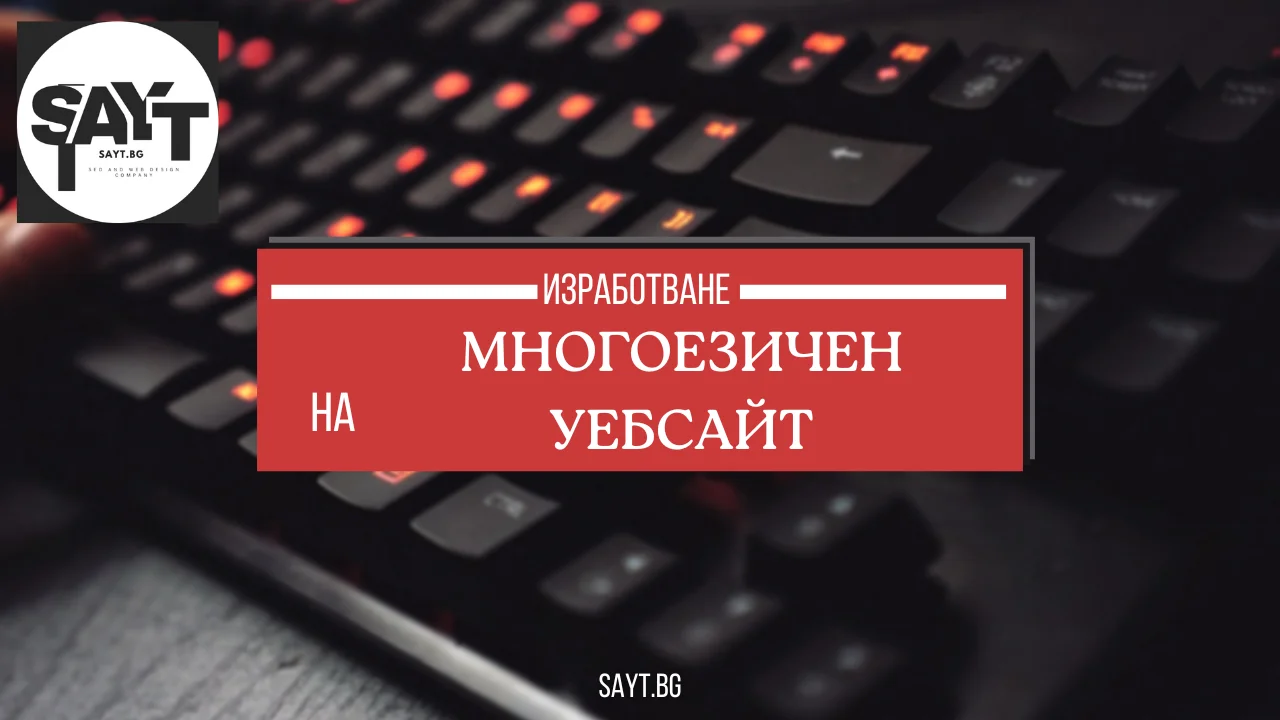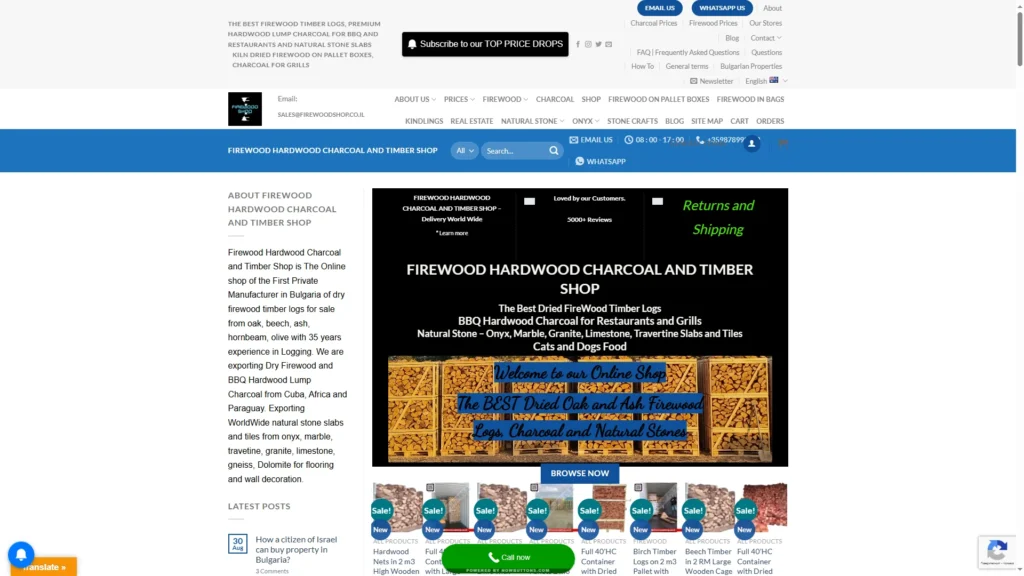
If anything can be called the future in e-commerce and e-marketing, it is the creation of the so-called Multilingual Website.
In a word, a Multilingual Website is a site where you write in one language, but the content is translated into the language the user reading is located in. This way, each page/article is indexed in the target languages in the Google / Bing / Yandex / Baidu search engines in the respective language.
I.e. I write an article in Bulgarian on a multilingual site and if the user is in Germany, the German Google (Google.de) reads it in the German translation and ranks it among the results in German.
That is, your site will be present and compete with search engine results in all languages (the specified target languages) into which the site has been translated.
Multilingual sites

You can view the Multilingual Website created by our team by clicking here :
Note: when you go to it, you see the translated version of the site in the language of the location you are currently in. If you have turned off your location, you see the main site in English.
It was created as a main language of English, but it self-translates into German, Danish, Dutch, French, Hebrew, Arabic, Turkish, Russian, Ukrainian, Greek, Romanian, Macedonian, Serbian, and other languages.
Below you can see how a multilingual website created by us ranks in Google search engines in the different languages of the reader’s location…
Below we have shown the ranking of our Multilingual Website on Google.com (the general English search engine), Google.DE (the German search engine), Google.NL (the Dutch search engine), Google.DK (the Danish search engine), Google.com.SA (the Arabic search engine), Google.co.IL (the Hebrew – Israeli search engine), Google.GR (the Greek search engine), Google.FR (the French search engine), Google.IT (the Italian search engine), etc.
A multilingual website is any website that offers content in more than one language. Examples of multilingual websites might include a Canadian business with an English and French version of its site, or a Latin American soccer blog available in both Spanish and Portuguese.
It usually makes sense to have a multilingual website when your target audience consists of speakers of different languages. If your Latin American soccer blog aims to reach a Brazilian audience, you might choose to publish only in Portuguese. But if you want to reach soccer fans from Argentina as well, providing content in Spanish can help you with that.
Google and language recognition
Google tries to determine the primary languages of each of your pages. You can help make language recognition easier by sticking to only one language per page and avoiding parallel translations. Although Google can recognize a page as being in more than one language, we recommend using the same language for all elements of the page: headers, sidebars, menus, etc.
Note that Google ignores all code-level language information, from “lang” attributes to Document Type Definitions (DTDs). Some web editors create these attributes automatically and are therefore not very reliable when trying to determine the language of a web page.
Someone who comes to Google and performs a search in their language expects to find localized search results, and that’s where you, as a webmaster, come in: if you’re going to localize, make it visible in search results with some of our tips below.
The Anatomy of a Multilingual Website: URL Structure
There is no need to create special URLs when developing a multilingual website. However, your users may want to identify which section of your website they are in just by looking at the URL. For example, the following URLs tell users that they are in the English section of this site: or . While these other URLs tell users that they are viewing the same page in French: or . Additionally, this URL structure will make it easier for you to analyze the indexing of your multilingual content. https://example.ca/en/mountain-bikes.htmlhttps://en.example.ca/mountain-bikes.htmlhttps://example.ca/fr/mountain-bikes.htmlhttps://fr.example.ca/mountain-bikes.html
If you want to create URLs with non-English characters, make sure you use UTF-8 encoding. UTF-8 encoded URLs must be properly escaped when linked from your content. If you need to escape your URLs manually, you can easily find an online URL encoder that will do this for you. For example, if I wanted to translate the following URL from English to French, , it might look like this: . Since this URL contains one non-English character (é), here’s how it would look properly escaped for use in a link on your pages: . https://example.ca/fr/mountain-bikes.htmlhttps://example.ca/fr/vélo-de-montagne.htmlhttps://example.ca/fr/v%C3%A9lo-de-montagne.html
Crawling and indexing your multilingual website
We recommend that you do not allow automated translations to be indexed. Automated translations do not always make sense and can potentially be seen as spam. More importantly, the point of creating a multilingual website is to reach a larger audience by providing valuable content in multiple languages. If your users cannot understand automated translations or find them artificial, you should ask yourself whether you really want to present them with this type of content.
If you are going to localize, make it easy for Googlebot to crawl all language versions of your site. Consider cross-linking page by page. In other words, you can provide links between pages with the same content in different languages. This can also be very useful for your users. Following our previous example, let’s say a French speaker happens to land on https://example.ca/en/mountain-bikes.html; now with one click they can get to https://example.ca/fr/vélo-de-montagne.htmlwhere they can see the same content in French.
To make all of your site’s content easier to crawl, avoid automatic redirects based on the language the user is fluent in. These redirects can prevent users (and search engines) from browsing all versions of your site.
Last but not least, store content for each language on separate URLs – don’t use cookies to display translated versions.
Working with encoding on the sign
Google directly extracts character encodings from HTTP headers, HTML page headers, and content. There’s not much you can do about character encodings other than watch out for conflicting information – for example, between content and headers. Although Google can recognize different character encodings, we recommend that you use UTF-8 on your website whenever possible.
If your tongue twists
Now that you know all this, your language may be distorted when you speak many languages, but your website doesn’t have to be!
Multilingual Website Multilingual Website Multilingual Website Multilingual Website Multilingual Website Multilingual Website Multilingual Website Multilingual Website Multilingual Website Multilingual Website Multilingual Website Multilingual Website Multilingual Website Multilingual Website Multilingual Website
Видове сайтове, раразботвани от САЙТ БГ

Multilingual Website Development: Elevate Your Business with Sayt.bg
Introduction to Multilingual Website Development
In today’s increasingly globalized marketplace, multilingual website development has emerged as a crucial strategy for businesses aiming to expand their reach beyond local borders. A multilingual website not only caters to a diverse audience but also recognizes the importance of language accessibility as a fundamental component of user engagement. By providing content in multiple languages, companies can effectively communicate their message to a wide variety of users, fostering a deeper connection with potential customers across different regions.
The significance of a multilingual approach extends beyond mere communication; it plays a vital role in enhancing the overall user experience. Users are more likely to engage with a website that offers content in their native language, leading to greater satisfaction and prolonged interaction. Furthermore, when websites are designed with multilingual capabilities, they can better accommodate users’ preferences, which in turn can encourage repeat visits and brand loyalty.
Additionally, multilingual website development can significantly improve search engine optimization (SEO) rankings. Websites that are available in multiple languages are indexed by search engines, allowing businesses to tap into various markets and increase their visibility in search results. This enhanced visibility can lead to a higher volume of organic traffic, which is essential for achieving business goals. Moreover, the integration of targeted keywords and phrases in multiple languages increases the likelihood of attracting a broader audience, ultimately driving more conversions.
In summary, embracing multilingual website development is not just a strategic advantage, but an essential step for businesses aiming to thrive in a competitive, global market. By focusing on language accessibility, user experience, and optimized SEO, companies can effectively elevate their business presence and connect with customers worldwide.
Why Choose Sayt.bg for Multilingual Development
Sayt.bg stands out as a premier SEO agency specializing in multilingual website development, offering a comprehensive suite of services designed to meet the diverse needs of businesses operating on a global scale. With a wealth of experience and a proven track record, Sayt.bg has positioned itself as a leader in the field, effectively helping clients navigate the complexities of multilingual online presence. The team’s expertise encompasses not only technical development but also strategic SEO practices tailored to multilingual markets.
One of the key advantages of partnering with Sayt.bg is their deep understanding of the nuances involved in creating multilingual websites. This agency recognizes that successful multilingual development goes beyond mere translation; it requires an integrated approach that takes into account cultural differences, local market preferences, and search engine algorithms. As a result, the websites developed by Sayt.bg are not only linguistically accurate but also optimized for organic search performance across multiple languages.
Sayt.bg is committed to delivering unique and innovative solutions. Their project portfolio showcases a myriad of successful launches, demonstrating their ability to craft tailored solutions that resonate with diverse audiences. Client testimonials further affirm the agency’s effectiveness, highlighting how Sayt.bg has transformed their online visibility and engagement through thoughtful multilingual strategies.
Moreover, Sayt.bg offers ongoing support and optimization services, ensuring that multilingual websites remain relevant and competitive in an ever-evolving digital landscape. Their collaborative approach encourages communication and feedback from clients, allowing for adjustments that enhance functionality and user experience.
In conclusion, Sayt.bg provides an unparalleled combination of expertise, customization, and effective solutions for businesses looking to develop a multilingual website, making it an ideal choice for companies seeking to elevate their global presence.
Key Features of Multilingual Websites
The development of multilingual websites has become vital for businesses aiming to reach diverse markets. One of the primary features that enhance their effectiveness is the language toggle option. This feature allows users to effortlessly switch between languages, thereby facilitating access for non-native speakers. A well-executed language toggle enhances user experience by making content readily accessible in the preferred language, ultimately leading to increased engagement and user retention.
Localized content is another critical aspect of multilingual websites. This involves not just translation but also cultural adaptation of content to resonate with local audiences. By tailoring phrases, examples, and imagery to fit the cultural context, brands can foster a deeper connection with users. It is essential for businesses to recognize that localization extends beyond language, shaping how users perceive and interact with the website.
SEO optimization strategies are equally important for multilingual websites. Each language version should be optimized independently to enhance visibility in search engine results. This includes using proper hreflang tags and conducting keyword research tailored to each language. Implementing localized SEO strategies aids in driving targeted traffic, increasing brand awareness across various regions.
Responsive design is another fundamental feature essential for multilingual websites. The site should automatically adapt to various device sizes, ensuring a seamless user experience across desktops, tablets, and smartphones. With an increasing number of users accessing websites on mobile devices, responsive design is crucial for retaining user engagement.
Lastly, user-friendly navigation plays a significant role in multilingual website effectiveness. Clear, intuitive navigation helps users from different language backgrounds locate information quickly and easily. A straightforward structure minimizes confusion, providing a positive browsing experience that encourages return visits and promotes brand loyalty.
SEO Strategies for Multilingual Websites
Developing a successful multilingual website necessitates careful consideration of SEO strategies tailored to enhance visibility across different linguistic and regional markets. This begins with the implementation of hreflang tags, which inform search engines about the various language versions of a web page. By using these tags appropriately, businesses can signal to search engines which version of a page should be displayed to users based on their language and geographic location. This not only enhances user experience but also helps avoid duplicate content issues that could hinder search rankings.
Another critical aspect is to optimize for local search engines, which requires an understanding of regional preferences and behaviors. For example, when developing content for different languages, it is crucial to recognize that direct translations often fail to resonate. Instead, creating language-specific content that caters to local cultures, customs, and colloquialisms can significantly improve engagement and drive organic traffic. Keywords should be researched thoroughly to identify relevant terms that potential customers use in their local language, ensuring that the content aligns with their searching patterns.
Moreover, managing multilingual content effectively entails maintaining a cohesive web structure that is easy for both users and search engine crawlers to navigate. Each language version should have its own dedicated URL, preferably under a subdirectory or subdomain format that clearly indicates the language. Regularly updating content across all language versions ensures that the information remains relevant and engaging, further improving the site’s SEO performance.
Utilizing analytics tools to monitor performance in each region is also essential. By analyzing how users from different locales interact with the site, businesses can adjust their strategies based on user behavior, ultimately enhancing visibility and outreach through refined multilingual SEO efforts.
Challenges in Multilingual Web Development
Creating a multilingual website presents a series of challenges that developers must navigate to ensure successful implementation and user engagement. One of the primary hurdles is content translation accuracy. Ensuring that the translated content mirrors the original meaning and intent is crucial. This may involve working with professional translators or utilizing advanced translation tools. However, automated translation solutions often fall short, resulting in ambiguous language and misinterpretations. Therefore, selecting an appropriate translation strategy is essential to maintain the quality and integrity of content.
Another significant challenge is addressing cultural differences. Each language carries its own cultural nuances, idioms, and references. This means that direct translation is rarely effective. For a successful multilingual strategy, one must adapt content to resonate with diverse target audiences. This adaptation can be time-consuming and requires a deep understanding of the local culture, consumer behavior, and market expectations.
Technical SEO issues also complicate multilingual web development. Search engines must easily index all versions of a website; therefore, following best practices for URL structure, hreflang tags, and meta descriptions in various languages is essential. Failing to implement these elements can hinder visibility on search engines and negatively impact the overall user experience.
Furthermore, maintaining multiple language versions of a site poses logistical challenges. It requires continuous updates to ensure that all language versions align with recent changes, promotions, or new content. Companies must develop efficient workflows to manage translations and updates systematically. Sayt.bg effectively navigates these challenges by providing tools and services specifically designed to enhance content translation accuracy, streamline cultural adaptation, and ensure robust technical SEO practices.
Best Practices for Creating a Multilingual Website
Developing a multilingual website requires careful consideration and adherence to best practices to ensure that it meets the needs of diverse audiences. The first step in this process is to select the right languages that align with your target market. Conduct thorough market research to identify the languages spoken by your potential customers. It is crucial to prioritize languages based on user demographics and geographical reach, as this will enhance engagement and increase your site’s visibility in relevant regions.
Once you have determined the appropriate languages, meticulous testing of your website’s performance across different locales is essential. This includes checking loading times, navigation, and overall functionality in each language version. Users expect a seamless experience regardless of the language; thus, usability testing should be an integral part of your development process. Implement tools for localization testing to assess how cultural nuances may affect user interaction with content.
Next, maintaining consistent branding across all language versions is vital. Your website’s design, tone, and messaging should resonate with your brand identity while being appropriately localized for each audience. This harmony reinforces brand recognition and fosters trust among users. Consider cultural sensitivities and local preferences when translating content, as direct translation may not always convey the intended message.
Lastly, utilizing analytics is key to tracking user engagement across various language versions of your website. By monitoring metrics such as user behavior, traffic sources, and conversion rates, you can gain valuable insights into how different languages perform. This data will help you make informed decisions regarding content updates, language selection, and future localization efforts. In essence, an effective multilingual website leverages not only the right languages but also a holistic approach to testing, branding consistency, and data-driven decisions for optimal user experience.
Case Studies: Successful Multilingual Implementations with Sayt.bg
In today’s globalized marketplace, establishing a multilingual web presence is essential for businesses seeking to expand their audience and cater to diverse customer needs. Sayt.bg has successfully partnered with a variety of clients across numerous industries, demonstrating its expertise in developing effective multilingual websites. Here, we explore several case studies that highlight the challenges faced, strategies employed, and results achieved through these collaborations.
One notable case involved a retail company that aimed to penetrate the European market. The client faced the challenge of communicating effectively with customers in various languages while maintaining brand consistency. Sayt.bg implemented a comprehensive strategy that included localization of content, ensuring cultural relevance, and offering seamless user experiences across languages. The results were impressive; the multilingual website led to a 30% increase in site traffic from European countries, significantly boosting sales and brand recognition in new markets.
Another example comes from the healthcare sector, where a clinic sought to reach non-native speakers in the community. The initial challenge was to provide critical information that was both accurate and easily accessible in multiple languages. Sayt.bg adopted a strategy that included translating medical documentation and creating multilingual support materials. The outcomes were substantial, with increased patient engagement and a 40% rise in appointment bookings from diverse linguistic groups within the first six months.
Lastly, we examine a technology firm that required a multilingual site to showcase its software solutions globally. Sayt.bg faced the dual challenge of technical terminology translation and the development of a user-friendly interface across languages. Through a meticulous approach involving collaboration with linguistic experts and user testing, the project led to a 50% increase in international inquiries, reflecting a successful outreach to a global audience.
These case studies exemplify how Sayt.bg has effectively tackled various challenges in multilingual website development and delivered substantial results for its clients. The agency’s commitment to understanding each client’s unique needs has positioned it as a leader in the industry.
Cost of Multilingual Website Development with Sayt.bg
When considering multilingual website development through Sayt.bg, understanding the costs involved is essential for effective budgeting. Several factors play a crucial role in determining the overall price, and recognizing these can help potential clients make informed decisions.
Firstly, the number of languages required significantly influences the cost. Each additional language necessitates translation and localization work, which can increase labor resources and time spent on the project. When developing a website in multiple languages, it is essential to factor in not only the direct translation costs but also potential adjustments to the design and user interface to accommodate different languages. This requires expertise in both linguistic and cultural localization, further impacting the budget.
The complexity of the project is another important determinant of costs. More intricate websites that feature custom functionalities or specific integrations may require additional development effort when adapted for a multilingual framework. For example, if the site encompasses e-commerce capabilities or advanced features such as membership portals, these components may need translation and adjustment for each language version, thus raising the overall expense.
Moreover, additional SEO services should be considered when budgeting for a multilingual website launch. Optimizing each language version for search engines requires careful keyword research, content optimization, and link-building strategies tailored to the target language markets. This can further contribute to the initial development costs as well as ongoing maintenance expenses to ensure all language versions are equally competitive in search engine rankings.
Ultimately, understanding these variables will assist potential clients in planning their budgets more effectively, ensuring that all aspects of multilingual website development with Sayt.bg are accounted for.
Getting Started with Sayt.bg: Your Path to Multilingual Success
Embarking on the journey to multilingual website development with Sayt.bg is a strategic decision that can significantly elevate your business. The first step in this process is to schedule an initial consultation with our expert team. During this consultation, we will assess your specific needs, discuss your target markets, and identify the languages that will best suit your audience. This personalized approach ensures that we create a tailored strategy that aligns with your business objectives and enhances your online presence.
Following the initial consultation, Sayt.bg employs a structured development process that encompasses the creation, design, and optimization of your multilingual website. Our team of skilled developers and designers will work collaboratively with you to implement a user-friendly interface across all selected languages. We focus on both aesthetic appeal and functional efficiency, integrating SEO best practices to ensure that your site ranks well in international search engines, thereby enhancing visibility among your target demographics.
Furthermore, we recognize that the completion of your multilingual website is just the beginning. Sayt.bg offers ongoing support to ensure that your site continues to perform optimally as it grows. This includes regular maintenance, language updates, and performance analytics to keep your website relevant and effectively serving clients across various geographies. Our commitment to customer satisfaction means that you can rely on us for any adjustments or improvements needed in response to user feedback or market trends.
In conclusion, starting your multilingual website development with Sayt.bg is an opportunity to reach new horizons. By taking advantage of our consultation, structured development process, and ongoing support, your business can thrive in the global marketplace. Begin your journey today and open the doors to expanded customer engagement and increased revenue through multilingual success.





No comment yet, add your voice below!